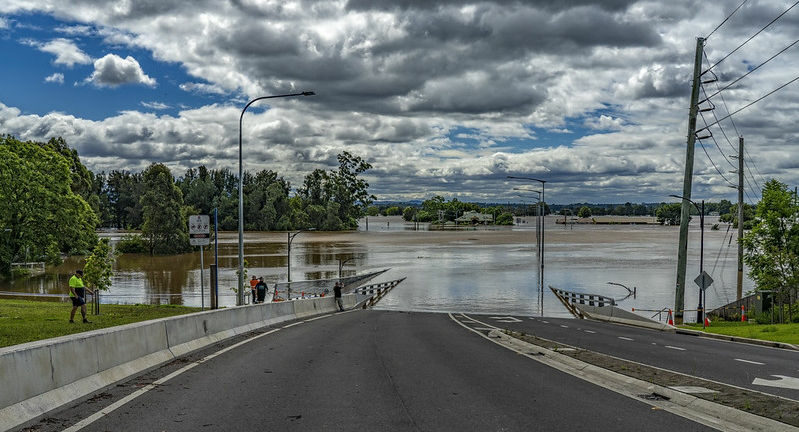Raising Warragamba Dam is not the best flood mitigation strategy, Premier
August 4, 2022
_Last week, New South Wales Premier Dominic Perrottet said that raising Warragamba Dam was the best strategy for managing the flood problem in the Hawkesbury-Nepean valley. It is not. It is not even a good strategy, or close to one.
_
The best solutions to problems are usually found in their causes. In the Hawkesbury case the causes lie in the history of development. For decades we have encouraged suburbanisation on the floodplains of the Hawkesbury River and its tributaries, and now we are developing those floodplains at a faster rate than ever.
There has barely been a mention in the utterances of the Premier and other proponents of the dam-raising scheme of the limited mitigation that it offers. There will be some, of course, and it is probably true that most of the people who have been hit by floods of late would have been spared had the raised dam been in place. Their support of the scheme is understandable.
But it is also true that the project will have little impact on genuinely big floods, and that the tributaries which enter the system downstream of the dam (principally the Nepean and the Grose) can produce very severe flooding by themselves. Not all flood configurations will be significantly mitigated by raising the dam. These inconvenient facts are being ignored by the government.
The governments push is decidedly political. Raising the dam will produce a visible (and thus electorally valuable) symbol of a government acting. But the level of the mitigation achieved will be less than could be won by tackling the problem at its roots.
The fundamental cause which must be addressed is inappropriate development in the past, occurring right now and as things stand certain to occur well into the future. If we are to manage the Hawkesburys flood problem effectively we must buy out as much as possible of the legacy created over many decades and stop creating more of it.
Buying back the problem will take a long time and it will never be completed. It will be hugely expensive even if, over decades, we remove only the roughly 5000 dwellings in the valley whose floors are below the level of the 1% Annual Exceedence Probability (so-called one-in-100-years) flood. Beyond that, halting the further expansion of the problem by changing the regulations governing new housing will be very difficult politically because it will enrage powerful development interests working within the current rules.
In association with dealing with the land use issue, the dams full supply level could be reduced to say 60% of the current level, with Sydneys desalination plant used if water supplies run low during periods of drought.
After the repeated flooding on the Hawkesbury over the past 18 months, we have an opportunity to act decisively to deal with the flood problem. What the government proposes is far from that: it proposes a last-century solution, a structural fix whose benefit is easily exaggerated and ultimately doomed to failure.
The failure will lie in the encouragement a raised dam will give to further floodplain development. A better approach would be to raise the lines below which urban development (including housing) is permitted on the Hawkesbury floodplains. This would reflect an appreciation of the real flood risk.
Currently, we encourage development in locations of known, severe risk. We dont make this clear to those seeking housing, of course. In effect we obfuscate in our communication and place unsuspecting people in harms way. Now we seek to mitigate the risk to a relatively small degree and encourage further inappropriate development that is sure at some stage to experience inundation.
The psychology of this is well known. With the dam raised or its construction under way, the notion will get out that the flood problem can be considered solved. Advocates of development on the floodplains will be involved here, denying or minimising the potential severity of a big flood. One spokesperson in the past has done this by referring to the Hawkesburys highest recorded flood as the alleged 1867 flood, effectively discrediting a known, well researched, extremely severe event.
The development lobbys backers in government will also be active. Last year, then Minister for Emergency Services David Elliott mused on radio that raising the dam would probably allow more land to be released in north-western Sydney. He wasnt talking about elevated land, but about land that cannot currently be developed for housing because of the flood risk.
The Leader of the Opposition, Chris Minns, last week released the beginnings of an alternative plan for managing the Hawkesbury flood problem. It incorporates limited levee development (which will give some protection to small areas), investment in evacuation routes (a must) and better protection of communications facilities (another necessity). He said nothing about reining in inappropriate development or buying back past mistakes. His plan is not far-reaching or deep-seated.
Labor might say more before long. Minns claims that his announcement is only a beginning, but he has not yet shown interest in a strategy based on a changed approach to land use.
We can hope that the federal government, without whose financial support the raising of the dam is hard to imagine, will not only refuse to contribute funds to the project but will veto it. It did something similar in 1983, when Bob Hawkes administration vetoed a state government plan to dam a wild river in Tasmania.
The Hawkesbury flood problem is huge and needs to be tackled at its root. Mitigating it at the edges with a dam-raising measure that will merely palliate the problem, while encouraging further development on the floodplain and thus undermining whatever mitigation has been achieved, is not a credible approach. But that is the approach the NSW Premier seeks to take.

